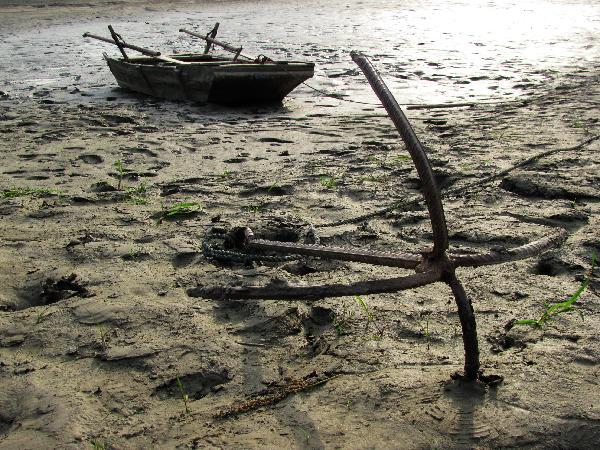|

|
|
A?boat is seen stranding on the dried up riverbed of Hanjiang River in Yunxian County, Hubei Province, May 15, 2011.
2011年5月15日,一只船在湖北省鄖縣干涸的漢江上擱淺。 |
久旱造成中國中部省份水庫干涸
據新華社報道,湖北水利管理部門周一表示,持續5個月的旱情已致使1392個水庫失去作用,水位降到死水位以下。
湖北省水利廳的高級官員袁俊光表示,截止周日,4個中型水庫和1388個小型水庫的水位降到正常放水水平以下。他說,即使是南水北調工程的重要組成部分—丹江口水庫的水位周六也降到較死水位低4.23米的水平。
旱情已致使31.5萬人和9.73萬頭牲畜缺少飲用水,約83萬公頃農田受影響。氣象學家周月華表示,拉尼娜是造成旱情的原因。但長江水利委員會官員黃奇說,旱情并不是缺水造成的,而是水資源分布不均。他呼吁建立全國性的統一蓄水系統。
國家電網表示,與此同時,湖南、湖北、河南、江西、山西等中國中部省份的供電系統也面臨著巨大的壓力。
新華社報道說,造成今年嚴重的電力短缺的另一個原因是,中國正在通過鼓勵投資新能源在內的新興行業,以推進經濟發展模式。
Reservoirs run dry in provinces in central China
The Hubei water authority said Monday that a five-month drought has left 1,392 reservoirs useless, with water below the level at which it is considered dead, Xinhua News Agency reports.
As of Sunday, water in four medium-sized and 1,388 small-sized reservoirs had dropped below the permissible discharge level, Yuan Junguang, a senior official at the Hubei Provincial Water Resources Department said. Even the Danjiangkou Reservoir, a key component of the south-to-north water diversion project, saw its water levels drop drastically to 4.23 meters below its dead water level on Saturday, he said.
The drought has left about 315,000 people and 97,300 livestock short of drinking water, and has affected about 830,000 ha of farmland. Meteorologist Zhou Yuehua said La Nina was to blame for the drought. But Huang Qi, an official of the Yangtze River Water Resources Committee, said the cause was not a water shortage but uneven distribution of water resources. He called for the establishment of a nationwide water conservancy system.
Meanwhile, power supply systems in the central Chinese provinces of Hunan, Hubei, Henan, Jiangxi and Shanxi are also facing significant pressure, the State Grid said.
Another cause of this year's severe power shortage is China's push to transform its economic development pattern by encouraging investment in emerging industries, such as new energy, Xinhua News Agency said.
(China.org.cn May 17, 2011)